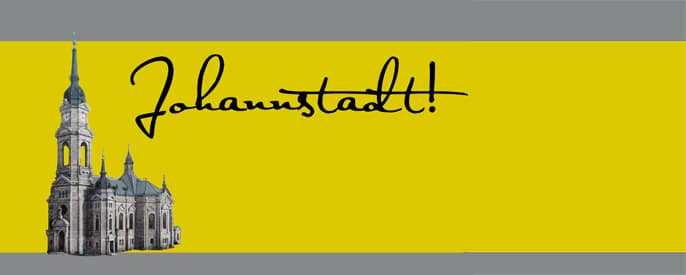This site is available in multiple languages: Deutsch, Русский, عربي.
Walk back from Johanngarten to Lili-Elbe-Straße and follow it left onward to the former chocolate factory until the end of the driveway and the beginning of the exclusive walking and cycling area. Here you will find location number 3 on the historical walking tour.
Before 1945: Saloon, succor and sweets
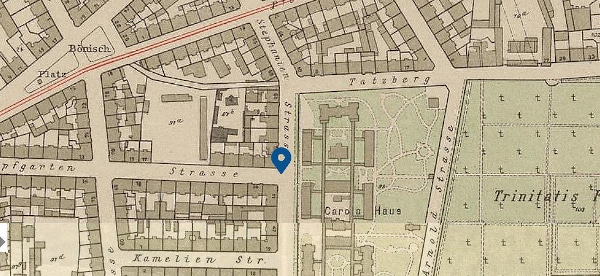
Beauharnais and Hopfgarten
Stephanienstraße received its name in the year 1876, in memory of Stéphanie de Beauharnais (1789–1860), Grand Duchess of Baden, adoptive daughter of Napoléon Bonaparte and grandmother of the Saxon queen Carola. In 1937, the stretch of road between Tatzberg and the Elbe was renamed Mackensenstraße, after the Prussian general field marshal, August von Mackensen (1849–1945). In 1945, the name was changed once more to Pfeifferhannsstraße, in remembrance of the Cistercian monk and peasant leader, Heinrich Pfeiffer (born before 1500; executed 1525). Hopfgartenstraße—laid in 1895—borrowed its name from the estate once owned here by Saxon cabinet minister, Count Georg Wilhelm von Hopfgarten (1739–1813). Later, the “Hopfgartens” pub would become a popular destination.
Carolahaus and Albertverein
Stephanienstraße received its name in the year 1876, in memory of Stéphanie de Beauharnais (1789–1860), Grand Duchess of Baden, adoptive daughter of Napoléon Bonaparte and grandmother of the Saxon queen Carola. In 1937, the stretch of road between Tatzberg and the Elbe was renamed Mackensenstraße, after the Prussian general field marshal, August von Mackensen (1849–1945). In 1945, the name was changed once more to Pfeifferhannsstraße, in remembrance of the Cistercian monk and peasant leader, Heinrich Pfeiffer (born before 1500; executed 1525). Hopfgartenstraße—laid in 1895—borrowed its name from the estate once owned here by Saxon cabinet minister, Count Georg Wilhelm von Hopfgarten (1739–1813). Later, the “Hopfgartens” pub would become a popular destination.
Find more information about Carolahaus here.
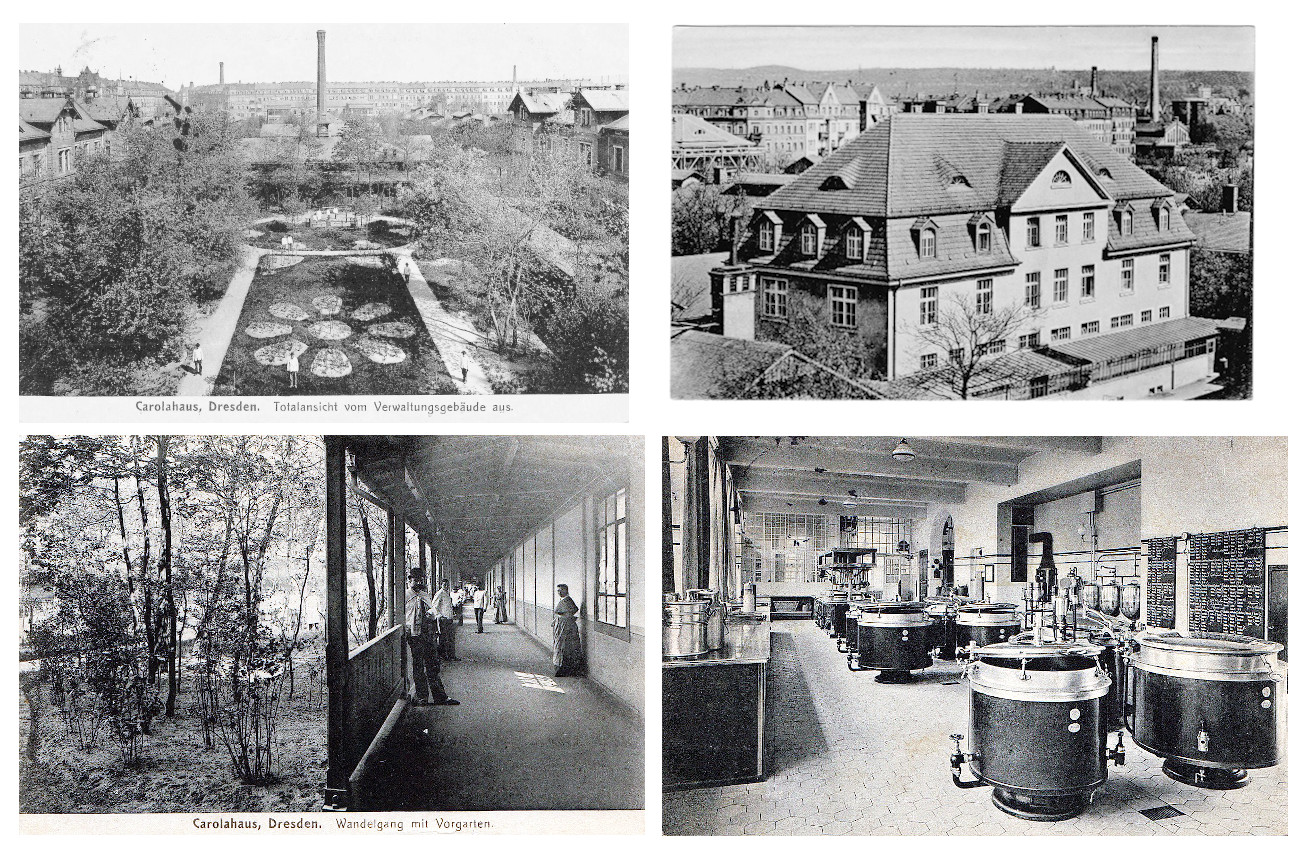
Chocolate and the Clauß family
In 1917, confectioner Bruno E. Clauß (1872–1930) moved the eponymous chocolate factory he had founded in 1914 out of the Leipziger Vorstadt and on to the grounds at Hopfgartenstraße 28 and Stephanienstraße 49. In order to be able to provide sweets at affordable prices, the company imported cacao, tea and coffee directly from their countries of origin and used their own trucks to market their products. Until 1943, the factory and its branches employed around 300 workers. There was a factory outlet at Elisenstraße 60, at the corner of Hopfgartenstraße.
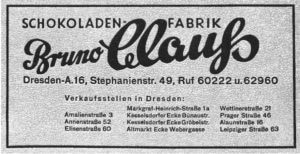
After 1945: Construction, creativity and child welfare
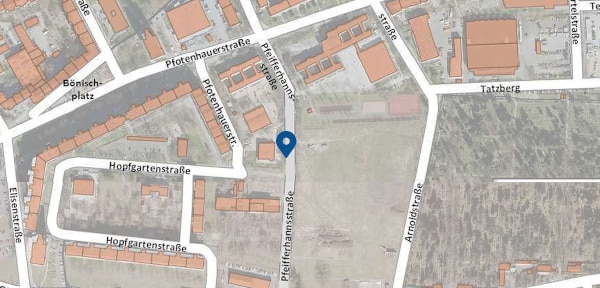
The evolution of the Dresdner Plattenwerk
Starting at the end of 1957, the 30,000 square meters once occupied by the Carolahaus became home to the “Plattenwerk Johannstadt”. The mechanized factory for industrial-size concrete slabs was largely an open-air operation. This is where the Dresden region would first employ a conveyor belt system to produce large blocks from broken brick concrete (which was primarily made up of rubble, ashes and concrete). This enabled serial manufacturing of story-high concrete slabs. The Johanstädter Plattenwerk also made other concrete products, such as sliding ceilings, bar plates and special orders. After pressured by a citizens’ initiative, the structural remains of the factory were hauled off in 2001. The skate park built on the southern end of the area attracted youth from all over Dresden and beyond. In 2019, this was torn down by its owners. A building development plan which came into force in 2006 anticipates construction of a residential nature on the site.
Find more information about the former concrete slab factory here.
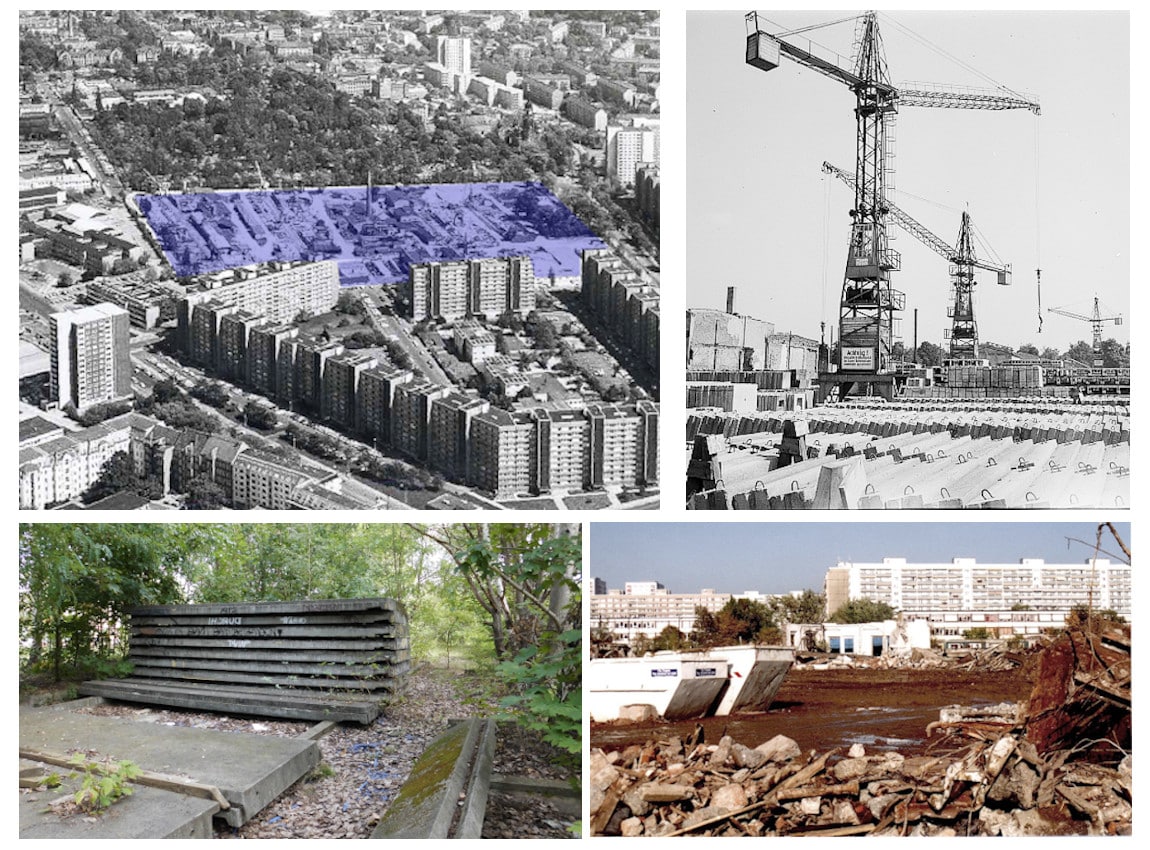
From chocolate came creative industry and child welfare
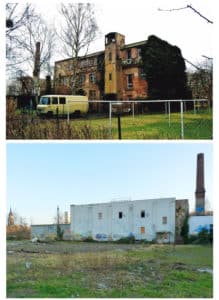
Below: Eastern section of the former chocolate factory, 2016. Photo: M. Kunert
The red brick building of the chocolate factory was the only building from that early development era to survive the bombings of February 1945. The plant continued operations for another eight years after the war, before being expropriated in 1953, its machines taken over by the “VEB Elbflorenz”. In the year 1954, the building was expropriated by the “VEB Karosseriewerk Dresden”. This is where a significant portion of parts for the “Wartburg Tourist” automobile were produced.
In 1996, the factory was returned to the heirs of Bruno E. Clauß. Since 1999, these heirs’ association has rented out the building’s office wing at affordable prices, primarily to architecture students In 2019, the Schokofabrik e. V. was founded, which has since managed the western portion of the chocolate factory. In 2020, it housed artist spaces, offices and a recording studio. In 2019, the Deutsche Kinderschutzbund (German Alliance for Child Welfare) acquired the eastern section of the building, including the former production floor, with the goal of developing it into an Integrative Family Center.
Text: Matthias Erfurth, Matthias Kunert, Henning Seidler
Editorial deadline: March 2021
Online platform update: In 2022, the former Stephanienstraße between Gerokstraße and Pfotenhauerstraße was redesigned as a result of intensive public participation. The section between Gerokstraße and Pfeifferhannsstraße was given the name Lili-Elbe-Straße by decision of the city council.
Further information on the street design can be found here.
